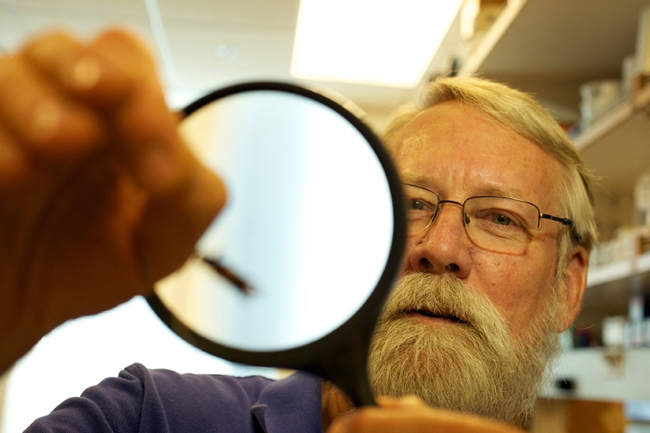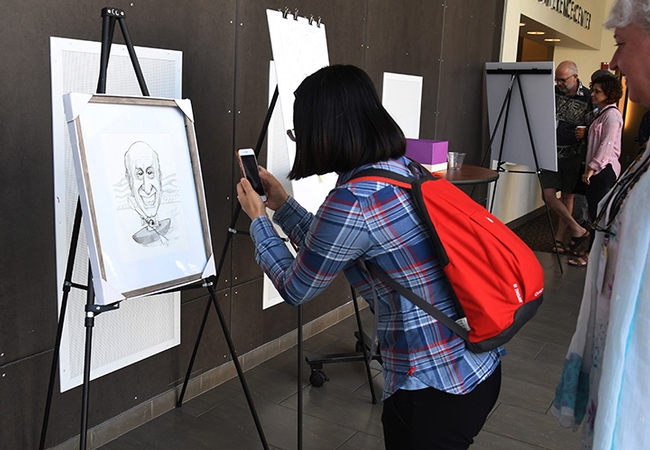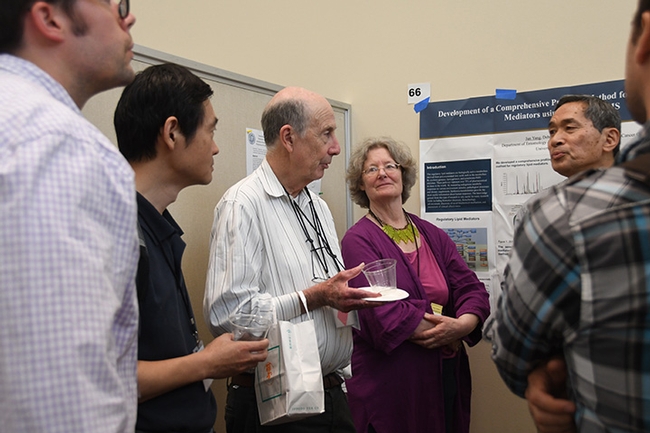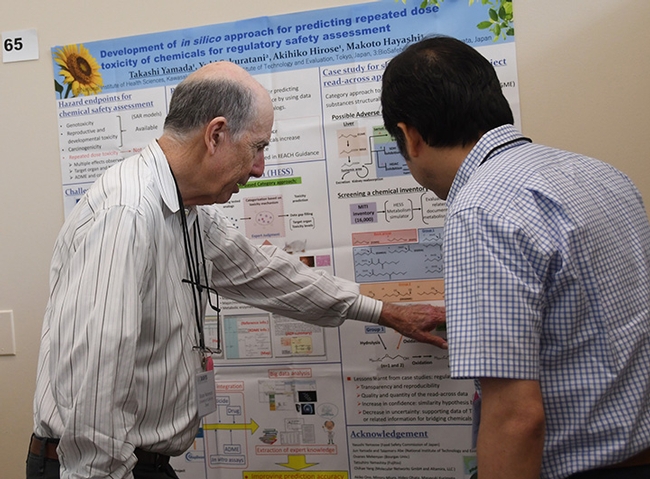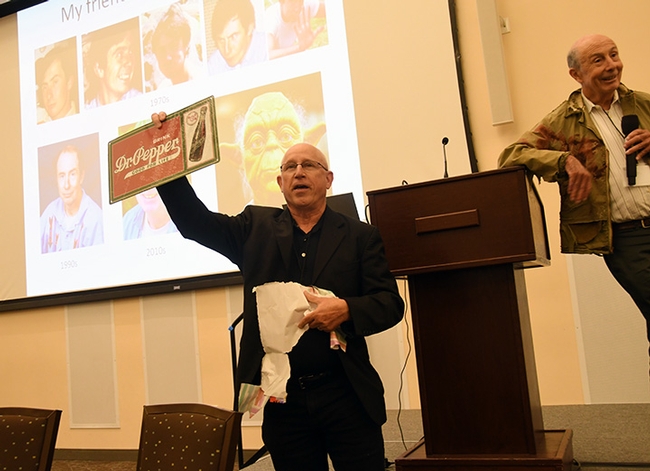- Author: Kathy Keatley Garvey
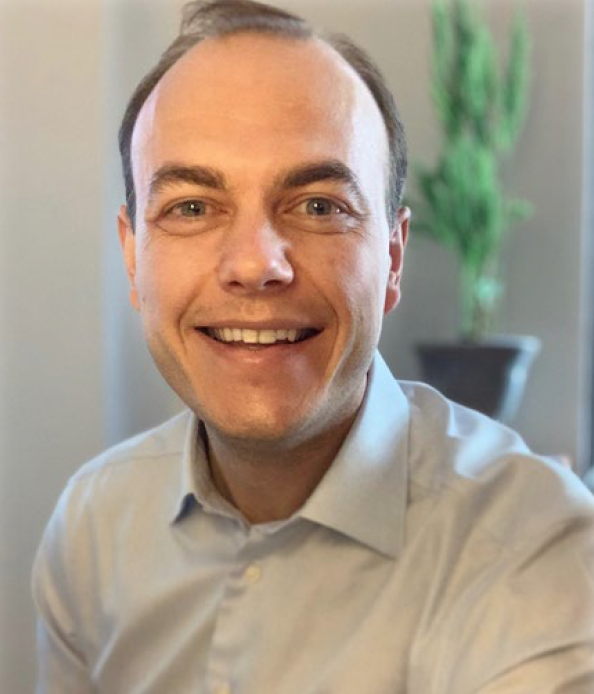
He will speak in person at 4:10 p.m. in 122 Briggs Hall. For those unable to attend, his lecture also will be on Zoom; link to https://ucdavis.zoom.us/j/99515291076.
"Plants interact with incredibly diverse groups of animals including plant-feeding insects and nematodes as well as their natural enemies," Groen says in this abstract. "These interactions are influenced by toxic defensive chemicals that plants make. In my talk, I will focus on how plants evolved variation in production of these defensive chemicals and how animal parasites in turn evolved mechanisms enabling them to handle such toxins."
He recently authored an article in the journal Current Biology on "Convergent Evolution of Cardiac-Glycoside Resistance in Predators and Parasites of Milkweed Herbivores."
From EurekaAlert: "Scientists now understand how certain animals can feed on picturesque, orange monarch butterflies, which are filled from head to abdomen with milkweed plant toxins. In high enough concentrations, milkweed can kill a horse, or a human. To be able to eat this plant, monarchs evolved a set of unusual cellular mutations. New UC Riverside research shows the animals that prey on monarchs also evolved these same mutations. A Current Biology journal article describes the research that revealed these mutations in four types of monarch predators — a bird, a mouse, a parasitic wasp, and a worm."
Groen, who joined the UC Riverside faculty in July 2021 following his postdoctoral research position (2014 to 2021) in the Noah Whiteman laboratory, Department of Ecology and Evolutionary Biology, University of Arizona, focuses his research on "understanding molecular mechanisms of adaptation in the context of species interactions and fluctuating environmental conditions."
A native of the Netherlands, he received his bachelor's degree and masters degree in biology from Wageningen University, Netherlands, and his doctorate in plant sciences from the University of Cambridge, UK.
Groen served as a visiting researcher from 2007 to 2008 in the Department of Multi-Trophic Interactions, Netherlands Institute of Ecology, and as a visiting researcher from 2008 to 2012 in the Department of Organismic and Evolutionary Biology, Harvard University.
"Growing up in The Netherlands, I became fascinated with plants and their responses to ever-changing environmental conditions while working as a 'ziekzoeker' in tulip fields outside of school hours," he writes in an author profile on the American Society of Plant Biologists website. The site featured him as the first author of “Evolutionary Systems Biology Reveals Patterns of Rice Adaptation to Drought-Prone Agro-Ecosystems," published Nov. 15, 2021 in the journal Plant Cell.
"A 'ziekzoeker' looks for diseased plants and I searched in particular for variegated white and red tulips--the ones you'd recognize from a golden-age Dutch still life painting," Groen related. "I learned how these tulips are infected with an aphid-transmitted virus and during my PhD in the group of John Carr at the University of Cambridge, I would further investigate the molecular mechanisms of how virus infections would change plant interactions with aphids and pollinators. I was gripped by the role that plant defensive chemicals play in shaping species interactions and I continued to study these as a postdoc with Noah Whiteman at the University of Arizona and the University of California, Berkeley.'
On the author page, he chronicled his previous work on the interactions between milkweeds and the monarch butterfly "and found out how the monarch evolved resistance to the cardenolide toxins that milkweeds make. While this work mostly revolved around a single gene of large effect, typically several or many genes are involved in organisms' evolutionary responses. As a Gordon and Betty Moore Foundation fellow in the group of Michael Purugganan at New York University, I learned about the latest developments in evolutionary genomics and systems biology while investigating patterns of natural selection on gene expression in rice populations that we grew under wet and dry field conditions with our collaborators at the International Rice Research Institute in The Philippines."
"The current paper (Plant Cell) is a culmination of this research," Groen related. "We found that under field drought rice plants do not just respond to changes in water availability, but also to concomitant changes in abundance of soil microbes that they interact with. As assistant professor in the Department of Nematology at the University of California, Riverside, I will continue to study rice and milkweed as well as plants from the nightshade family and look at the complex evolutionary tug-of-war between these plants and parasitic nematodes. Combining laboratory and field experiments, we will zoom in on the central role that plant chemicals play by using approaches from evolutionary and systems biology like the ones we describe in our paper."
Nematologist Shahid Siddique, assistant professor in the Department of Entomology and Nematology, coordinates the winter quarter seminars. He may be reached at ssiddique@ucdavis.edu for any technical issues involving the Zoom connection.
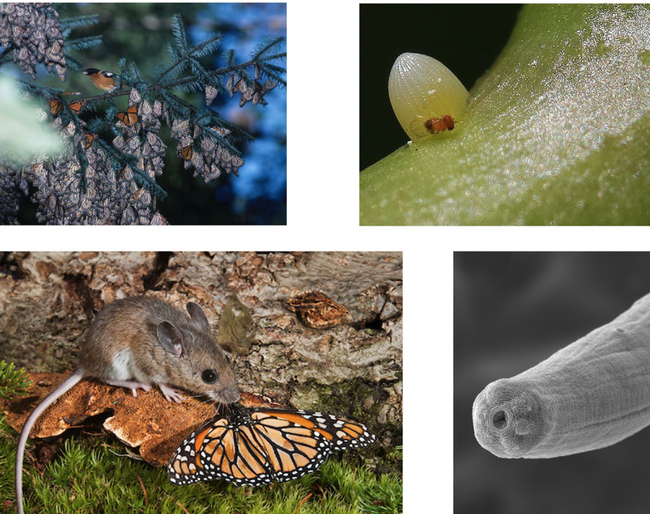
- Author: Kathy Keatley Garvey
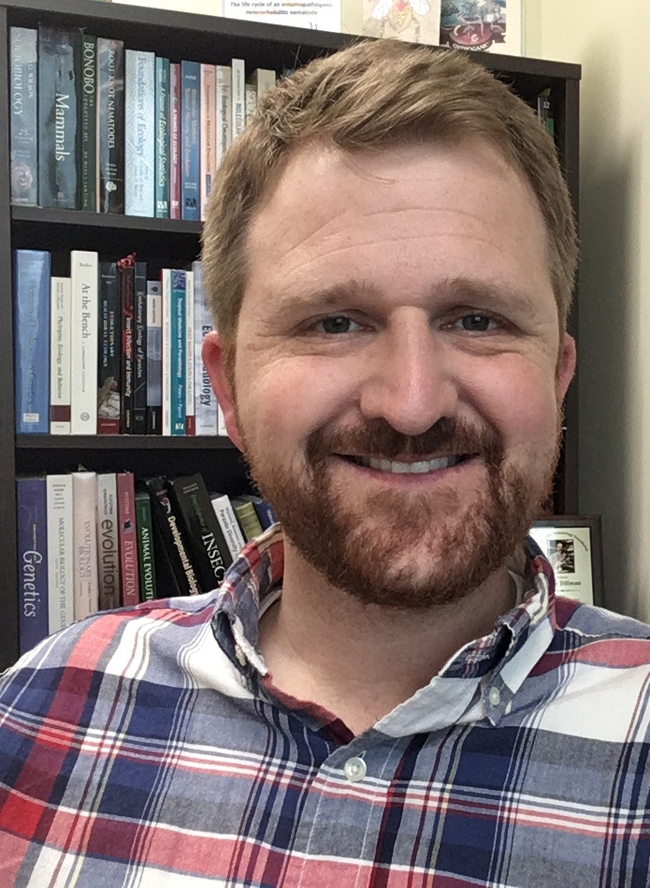
His seminar, to begin at 4:10 p.m., will be in-person and also will be broadcast live on Zoom at https://ucdavis.zoom.us/j/
"Parasitic nematodes are master manipulators of host immunity," Dillman says in his abstract. "Little is known about the identity and function of the cocktail of effectors they release during active infection. We have developed an effector discovery model using entomopathogenic nematodes and fruit flies, which we are using to identify and characterize potent modulators of insect immunity."
Dillman recently received a $1.8 million Outstanding Investigator Award from the National Institutes of Health to study the microscopic parasitic nematodes or "worms" that infect billions of humans and can cause blindness, cognitive issues and sometimes death. He focuses his research on identifying the specific proteins in a nematode's spit or venom that can trick the immune system to ignore its presence. His work on the fruit fly as his model organism could lead to treatments for autoimmune diseases in humans, such as celiac, Crohn's or inflammatory bowel diseases.
Dillman, who joined the UCR faculty in February 2015, is featured in a UC Riverside press release, "Parasitic Worm Venom Evades Human Immune System," posted July 20, 2020 on EurekAlert.
Worms Affect Billions of People. "By some estimates, nearly a quarter of the world's population is infected with various types of microscopic worms, or nematodes, with effects ranging from cognitive impairment and blindness to debilitation, elephantiasis, and death," writer Jules Berstein related. "Examples include hookworm, which thrives in the American South, causing developmental delays and anemia; and pinworms, which commonly infect children and child care workers with an itchy perianal-area rash."
She quoted Dillman: "You can have a person riddled with infection who never realized there's a 2-centimeter-long worm in their eye and thousands of parasites in their blood. The immune system never signaled something was wrong. How is that possible? We know very little about how that works."
Dillman described nematodes as "devastating parasites of humans, capable of modulating our biology in numerous ways, including suppressing our immune systems. The goal of my lab is to understand this modulation and to characterize the chemical pathways that allow it to happen. There's compelling data that parasites could even be used to treat autoimmune disorders such as Crohn's or inflammatory bowel disease. Parasitic worms are just the coolest things you could study because there are so many strange interactions, both positive and negative, that occur between the worms and their hosts."
Why Fruit Flies? Aylin Woodward of Business Insider spotlighted Dillman's work in a news story published Sept. 13, 2020. She wrote that his lab "is looking at 500 or so different types of proteins released by nematodes that infect fruit flies" and quoted Dillman as saying that "flies are cheaper and easier to work with, and the parasites that affect insects release the same proteins as those that infect mammals."
Dillman received his doctorate in 2012 from the California Institute of Technology (Caltech), a private research university in Pasadena, and then served as a postdoctoral fellow at Stanford from 2013 to 2014. He holds a bachelor's degree (2006) from Brigham Young University.
Nematologist Shahid Siddique, assistant professor, coordinates the UC Davis Department of Entomology and Nematology seminars and will introduce Dillman. He may be reached at ssiddique@ucdavis.edu.
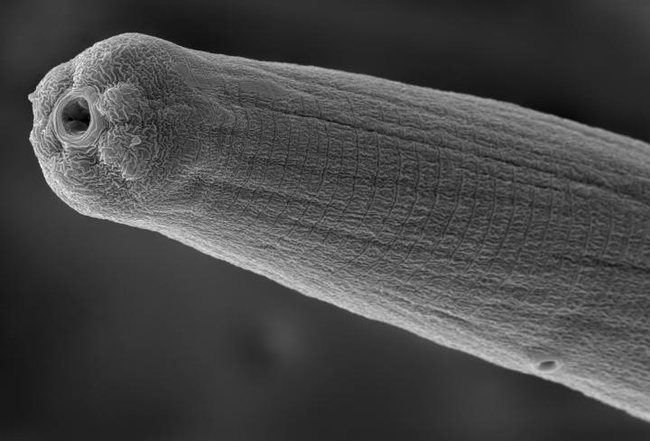
- Author: Kathy Keatley Garvey
Should auld acquaintance be forgot,
and never brought to mind?
No, they won't—at least not for Bruce Hammock, a distinguished professor at the University of California, Davis, and the hundreds of scientists he's trained over an academic career spanning more than four decades at UC Davis and UC Riverside.
Looking back over 2018, Hammock remembers fondly the weekend that 100 of his former laboratory alumni from 10 countries traveled to Davis to honor his work, reunite, collaborate, and reminiscence.
Billed as “Biochemistry and Society: Celebrating the Career of Professor Bruce Hammock,” the three-day event drew Hammock lab alumni from throughout the United States, as well as Egypt, Spain, China, Australia, New Zealand, Germany, Sweden, Canada and the Czech Republic.
“It was really special and I will treasure that weekend always,” said Hammock, who trained scientists at UC Riverside for five years before joining the UC Davis faculty in 1980. He currently holds a joint appointment with the UC Davis Department of Entomology and Nematology and the UC Davis Comprehensive Cancer Center. He has directed the UC Davis Superfund Program, funded by the National Institutes of Health's National Institute of Environmental Health (NIH/NIEHS), for 31 years.
The distinguished professor, known for his expertise in chemistry, toxicology, biochemistry and entomology, meshes all four sciences in his 50-year research on acute and neuropathic pain in humans and companion animals. It all began with his basic research on how caterpillars become butterflies, research that led to key discoveries about chronic pain.
Since then, his lab has generated more than 80 patents, 300 postdoctoral fellows, and more than 65 graduates, who now hold positions of distinction in academia, industry and government.
Hammock's colleagues, and former postdoctoral fellows, graduate and undergraduate students and visiting scholars arrived at the lab reunion with their spouses--as well as their scientific posters for display and discussion. The posters covered everything from ground-breaking research in prestigious journals to a humorous look at his annual water balloon battles in front of Briggs Hall.
The scientists dined at the UC Davis Conference Center, the Buehler Alumni Center and the Stonegate Country Club; shared months, years and decades of memories; and toasted, roasted and gifted their mentor. Hammock, in turn, toasted, roasted and gifted them.
“We had a blast,” recalled organizer Shirley Gee, a former research toxicologist and manager of the Hammock lab for 31 years. She retired in June 2016 after 40 years of service with the university.
“I have had a vision of this event to honor Bruce for many years now, and it was such a thrill to see it come together,” she said. “Reconnecting in person with all the alumni and their families was more rewarding than I could have imagined, but even more importantly was the thrill of watching alumni reconnect with each other! There were a lot of tears in the house. Many people I think were surprised by how the years melted away when they began reacquainting. I think that speaks to the environment that Bruce created that led to many strong personal and professional bonds.”
Gee credited her seven-member committee—former Hammock students Keith Wing, Jim Ottea, Tom Sparks, Babak Borhan, Qing Li; postdoctoral fellow and “academic grandson” Kin Sing Stephen Lee, a former student of Babak Borhan; and colleague Sarjeet Gill, now a distinguished professor at UC Riverside, with greatly contributing to the success of the one-of-a-kind celebration.
As graduate students, and Hammock and Gill worked together in the John Casida lab at UC Berkeley and later in Larry Gilbert's lab where they co-discovered the enzyme, soluble epoxide hydrolase. Hammock remembers researching juvenile hormones and what's involved in "how caterpillars became butterflies."
Hammock has studied the enzyme system and its inhibitors ever since. He recently formed a Davis-based company, EicOsis, to develop an orally active non-addictive drug for inflammatory and neuropathic pain for human beings and companion animals. Human clinical trials are scheduled to begin in 2019. Several seed-fund grants and a NIH/NINDS (National Institute of Neurological Disorders and Stroke) Blueprint Development Grant support EicOsis.
Hammock, described at the lab reunion as a “genius,” collaborates with scientists worldwide in what's been described as “unprecedented research with a multidisciplinary, integrated approach to research focused on insect biology, mammalian enzymology, and analytical chemistry.” He has authored more than 1000 publications on a wide range of topics in entomology, biochemistry, analytical and environmental chemistry in high quality journals, and has been cited more than 54,000 times. In the epoxide hydrolase field, the Hammock laboratory has published almost 900 peer-reviewed papers.
Tom Sparks, who was Hammock's first graduate student at UC Riverside, chronicled Hammock's career and recalled humorous anecdotes from his early professorship at UC Riverside. A former professor at Louisiana State University, and now a research fellow in Discovery Research at Dow AgroSciences (now Corteva Agriscience, Indianapolis, Sparks praised Hammock's intellect and curiosity. “For Bruce, it was all about the journey, looking around and operative at the interface between entomology, biochemistry and chemistry.”
Gill, along with University of Utah emeritus professor Glenn Prestwich and UC Davis research scientist Karen Wagner also delivered presentations, fondly recalling their shared time and science with Hammock.
Keith Wing, who was Hammock's second graduate student at UC Riverside/Davis, served as emcee at the lab reunion. A former senior research associate at DuPont and Rohm and Haas and current consultant, Wing said “Bruce has inspired many hundreds of developing scientists. For myself and many others, he was able to see what we could become as scientists and social contributors before we could see it ourselves."
Qing Li, a professor in the University of Hawaii's Department of Molecular Biosciences and Bioengineering College of Tropical Agriculture and Human Resources who received his doctorate from UC Davis, studying with major professors Bruce Hammock and James Seiber, said that "Bruce is an eminent scientist and a great mentor. Many of us have benefited from his effective mentorship. Back in 1990, after he signed my dissertation, he shook my hand, and then he asked me to tape-record it and give him the recordings -- a great 'homework' assignment and good practices for me."
Others commented that they learned this from Hammock: “We explore the unexpected and get to do things that don't work” and “Design things to fail; when they don't fail follow along.”
Hammock, the crowd agreed, seems to follow baseball legend Yogi Berra's sage advice: “If you come to a fork in the road, take it.”
Gill praised Hammock's “impact on human health, environmental health” as well as his love of the outdoors—from kayaking to mountain climbing.
Numerous alumni lauded Hammock's sense of humor. One scientist quoted Albert Einstein as saying “Creativity is intelligence having fun” and added “Bruce is always having fun.”
Among the other comments:
- “I never heard him speak a cross word.”
- "He treats everyone with respect.”
- "Bruce loves science and he loves people.”
- "He never heard a crazy idea.”
- "What Bruce does—he delivers the future.”
- "Bruce has a lot of determination and can approach difficult problems from multiple angles.”
- "Bruce values strong relationships with friends he has made over the years”
A native of Little Rock, Ark., Hammock received his bachelor of science degree, magna cum laude, in 1969 from Louisiana State University, Baton Rouge, where he majored in entomology and minored in zoology and chemistry. Then it was off to UC Berkeley, for his doctorate in entomology/toxicology in 1973, and postdoctoral fellowship.
It was at UC Berkeley where he met and married his wife, Lassie, who had just entered the doctoral program in plant physiology. They married in 1972 and then “the Army called me up,” Hammock remembers.
Hammock served as a public health medical officer/first lieutenant with the U.S. Army Academy of Health Science in San Antonio, Texas; and then did more postdoctoral research at the Rockefeller Foundation, Department of Biology, Northwestern University, Evanston. Ill.
Hammock then joined the faculty of the Division of Toxicology and Physiology, UC Riverside Department of Entomology in 1975 before heading for UC Davis in 1980 to accept a joint-faculty appointment in toxicology and entomology.
Bruce and Lassie reared three children: Tom, Bruce and Frances. “Frances and her husband, Adrian, teach math at UC San Diego; Bruce is on the UC Davis School of Veterinary Medicine faculty; and Tom, a graduate of the American Film Institute Conservatory, makes movies,” Hammock said, adding that he and Lassie appeared in one of the movies that Tom directed: "The Last Survivors."
Highly honored by his peers, Hammock is a fellow of the National Academy of Inventors, which honors academic invention and encourages translations of inventions to benefit society. He is a member of the U.S. National Academy of Sciences, a fellow of the Entomological Society of America, and the recipient of scores of awards, including the Bernard B. Brodie Award in Drug Metabolism, sponsored by the America Society for Pharmacology and Experimental Therapeutics; and the first McGiff Memorial Awardee in Lipid Biochemistry.
Hammock told the crowd at the reunion that he began his career studying insect science but switched to human research after encountering “all the suffering involved in acute and neuropathic pain.”
His insect science research centered around how a key enzyme, epoxide hydrolase, degrades a caterpillar's juvenile hormone, leading to metamorphosis from the larval stage to the adult insect. He then wondered "Does the enzyme occur in plants? Does it occur in mammals?" It does, and particularly as a soluble epoxide hydrolase in mammals.
“It is always important to realize that the most significant translational science we do in the university is fundamental science,” said Hammock. “The extreme and poorly treated pain that I observed as a medical officer in a burn clinic in the Army, is a major driver for me to translate this knowledge to help patients with severe pain.”
And it all began with him asking how caterpillars turn into butterflies.
"Science is full of surprises," the distinguished UC Davis professor said. "We need to remember that the concept, the clinical target, and even the chemical structure came from asking how caterpillars turn into butterflies."
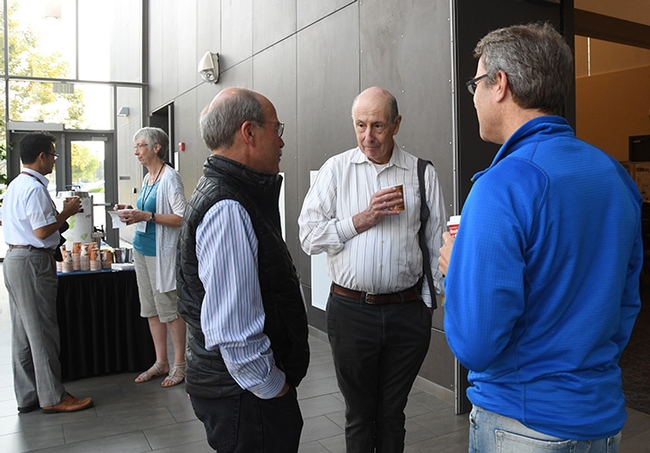
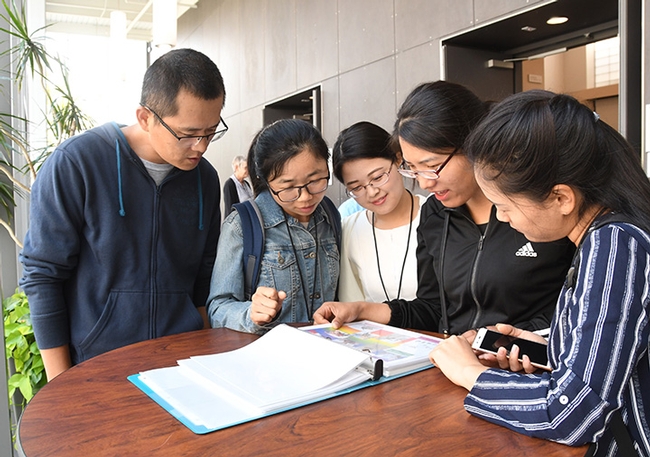
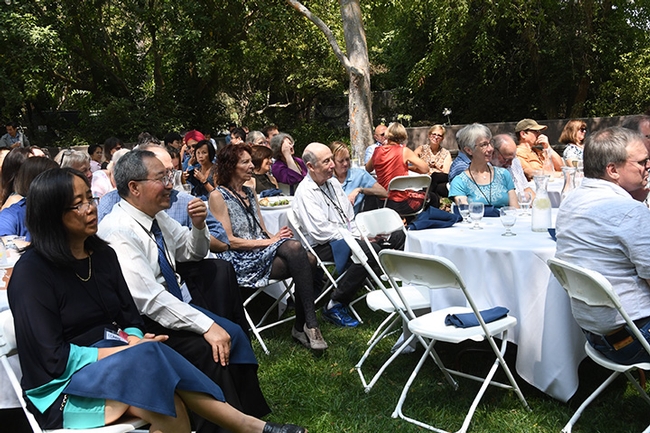
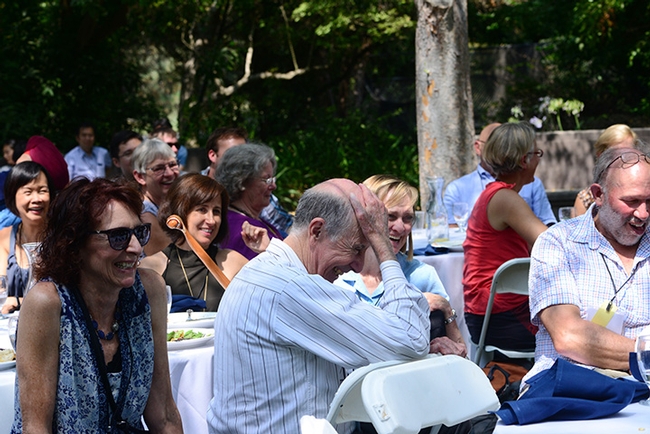
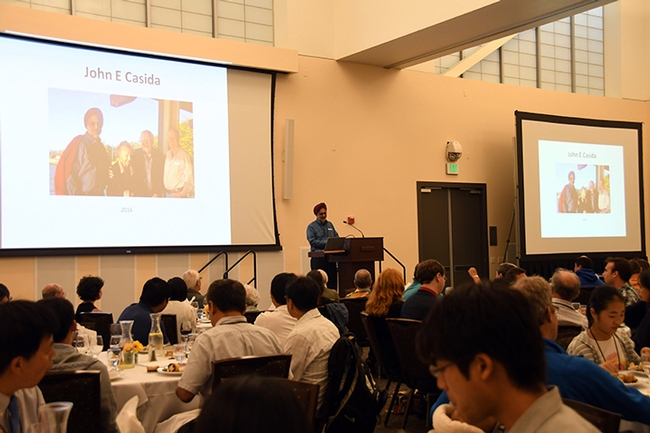
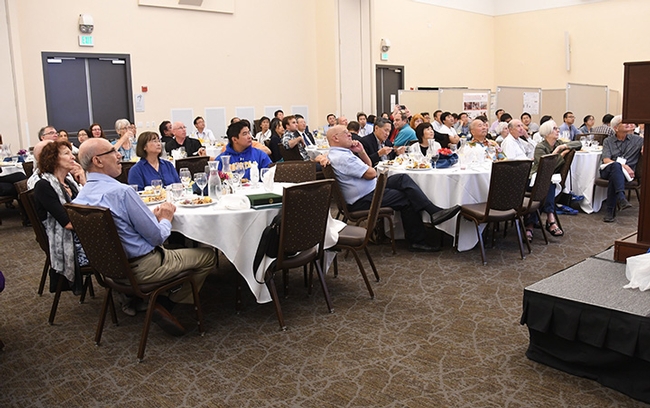
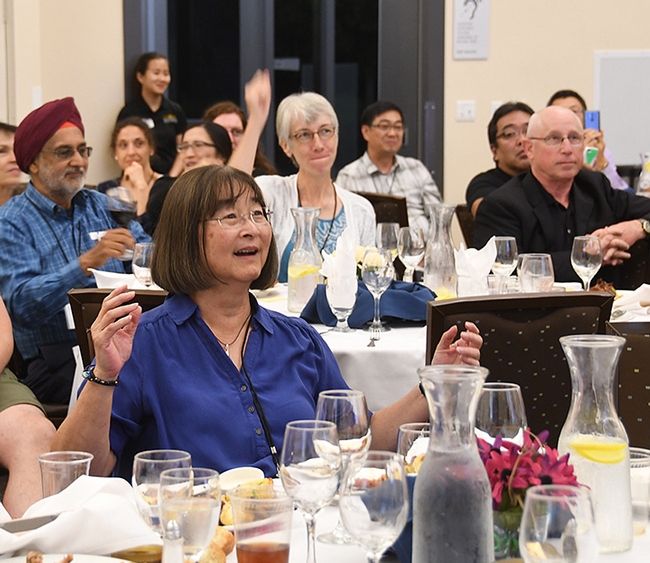
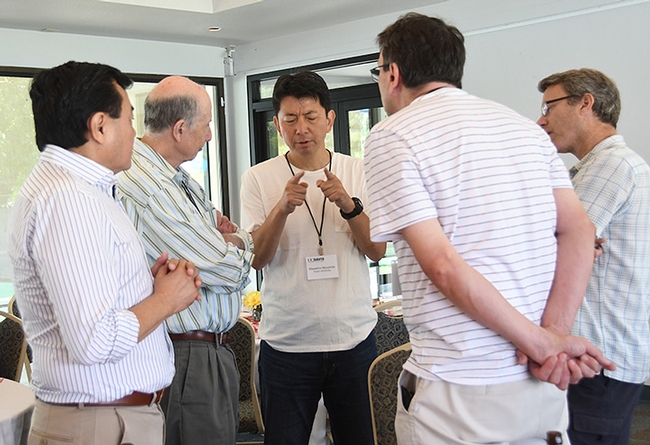
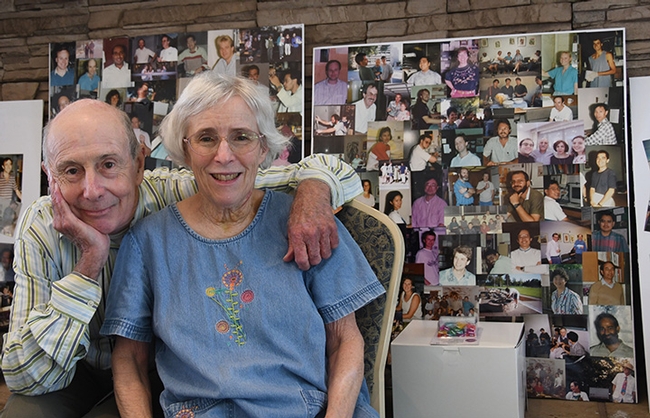
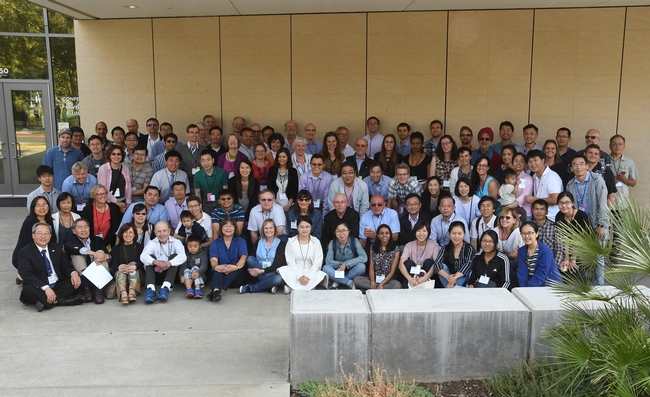
- Author: Kathy Keatley Garvey
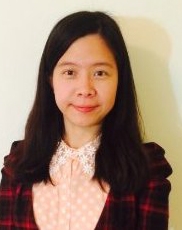
Her seminar is open to all interested persons.
In her abstract she writes:
"The history of humankind is intimately connected to insects. Insect borne diseases kill a million people and destroy tens of billions of dollars' worth of crops annually. However, at the same time, beneficial insects pollinate the majority of crop species humans eat. Given the importance of insects in human affairs, it is somewhat surprising that computer science has not had a larger impact in entomology. We believe that recent advances in sensor technology/machine learning are beginning change this, and a new field of Computational Entomology will emerge."
"In this talk we will demonstrate that inexpensive sensors allow us to classify flying insects, down to the level of sex/species in most cases. This amazing computational ability opens host of new challenges and opportunities. We will discuss one for concreteness. Our problem is motivated by our collaboration with Microsoft Research, which allows us, for the first time to capture individually targeted insects. In brief, how can we task a (drone delivered) robotic insect trap to capture a maximally diverse sample of insects, with no human supervision?"
"We will conclude this talk with a quick overview of five other problems/opportunities that are ripe for exploration by entomological/computer science collaborations."
On her website, Zhu writes:
- My summer internship project is featured in an on-going Microsoft ad campaign
- Our paper "Matrix Profile II: Exploiting a Novel Algorithm and GPUs to break the one Hundred Million Barrier for Time Series Motifs and Joins!" was selected as one of the best paper award candidates at ICDM 2016
Zhu received two degrees from Shanghai Jiano Tong University, Shanghai China. She earned her bachelor's degree in microelectronics and her master's degree in integrated circuit engineering. At UC Riverside, her major advisor is Eamonn Keogh, professor in the Department of Computer Science and Engineering.
Coordinator of the UC Davis Department of Entomology and Nematology seminars is agricultural entomologist Christian Nansen, assistant professor. He may be reached at chrnansen@ucdavis.edu
- Author: Kathy Keatley Garvey

Paine is widely recognized for his work in landscape and forest entomology, and the integrated pest management of woody ornamentals. His research has developed successful biological control projects and explored the biology and ecology of invasive pests and their interactions with other species.
His primary research focus is "to develop a better understanding of the biology and ecology of the herbivorous insects through studies of their interactions with host plants, competitors, and natural enemies, and determine the influence of environmental stress on those interactions."
Born in Delano, Calif., Paine is a 1973 graduate of UC Davis, with bachelor degrees in history and entomology. He received his doctorate in entomology in 1981 from UC Davis under tutelage of Martin Birch. Paine then completed his postdoctoral research at the University of Arkansas in Fred Stephens' lab. In 1986, he returned to California and became an assistant professor at UC Riverside, and advanced to associate professor in 1992, and full professor in 1995.
Paine has written more than 200 refereed journal publications, book chapters, proceedings, technical papers, and edited two books. Since becoming a member of the Entomological Society of America (ESA) in 1975, he has received many honors including the Recognition Award in Urban Entomology (1999), the Distinguished Achievement Award in Horticultural Entomology (2009), and fellow (2006). He served as president of the Pacific Branch of ESA in 1999-2000. Paine was selected a fellow of the American Association for the Advancement of Science in 2005. He is the recipient of numerous teaching awards, both from the ESA and UC Riverside.
The seminar memorializes prominent cotton entomologist Thomas Frances Leigh (1923-1993) and his wife, Nina Eremin Leigh (1929-2002). Tom Leigh was an international authority on the biology, ecology and management of arthropod pests affecting cotton production. During his 37-year UC Davis career, he was based at the Kern County Shafter Research and Extension Center, also known as the U.S. Cotton Research Station. He researched pest and beneficial arthropod management in cotton fields, and host plant resistance in cotton to insects, mites, nematodes and diseases.
Leigh joined the UC Davis Department of Entomology in 1958, retiring in 1991 as an emeritus professor, but he continued to remain active in his research and collaboration until his death on Oct. 26, 1993. The Pacific Branch of the Entomological Society of America awarded him the C. F. Woodworth Award for outstanding service to entomology in 1991.
